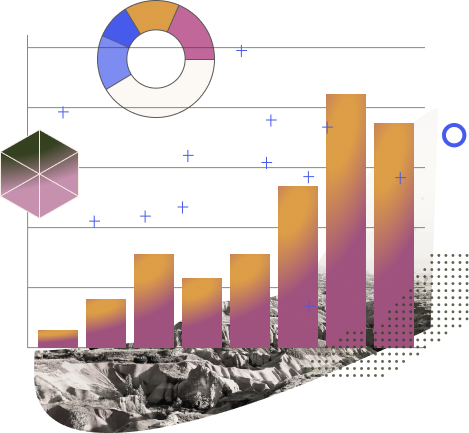This is an interview with Tara Chapman, the Founder of Two Hives Honey with product currently in a number of restaurants and now grocery stores in Texas. Today we ask Tara to give us a step by step walk through of exactly how she went from idea to getting her product in front of retailers and eventually how she was able to sell her product to grocery stores in Texas to expand the brand and grow revenue.
Step By Step Guide To Get Your Product Into Grocery Stores By Two Hives Honey
- Identify the traits of a healthy or unhealthy co-founder relationship and take action
- Determine if you can sell an MVP or bootstrap product with little to no costs to fund bigger investments in facilities and marketing
- Automate and “productize” your initial offering with scheduling software and point of sale systems – “business process automation”
- Give The People What They Want – Finding Out They Want Product Y, not Product X
- When A Big Retailer Wants All Your Inventory – What Do You Do? Give Them Some, Not All!
- Decide what shelf you belong on – premium, commodity, gift, other?
- Design packaging that supports that pricing and positioning
- Create a small sample product to drive new customers
- Grow A Strong Organic Following – Creatively Partner With Bigger Brands
- Use Social Media Authentically
- Keep Challenging Yourself To Think Bigger
Interview:
Chris: How long as Two Hives Honey been in business?
Tara: Two Hives Honey is approaching it’s fifth year as a honey and full-service beekeeping business here in Austin.
Chris: And how did you arrive here?
Tara: I’m from rural West Texas and went to Duke which was my first time out of Texas. After college, I was recruited into the Central Intelligence Agency and worked there and for other federal entities for the next ten years. I had a great set up where I was able to live in Austin when I wasn’t deployed to Afghanistan or D.C. While in Austin, I took a beekeeping class and fell in love with it. I started a hive with a friend and was looking for an exit strategy from my career in the government. I also interviewed at several tech companies like Facebook, Apple, and Google but to be honest, at the time I didn’t know I had any transferable skills. I was literally helping with the reconstruction of a country and managing massive budgets, but I felt like a complete outsider in the civilian world.
Finally, I decided I was going to go to business school and the night before I went to take the GMAT, I just put the study materials down and decided I was going to start my own company and learn that way. So I googled how to start a business, went down the Secretary of State, and found out that there was some free mentoring from the city. The mentoring has since been taken over by Score.
Chris: You had a co-founder initially. What happened there?
Tara: The first bit of advice I got from my business mentor was to let go of my partner. Basically, I couldn’t see all the warning signs at first. The warning signs were very clear: I was going to be the one to quit my job and she wasn’t. I was going to be the one to put in the initial money, she wasn’t. Basically, I was going to take all the risk and she wasn’t taking any. I learned that co-founders really need to share the risk for it to be equitable. I also learned that she wasn’t really interested in doing any of the actual work on the business. She really enjoyed bees but didn’t want to get involved in sales, marketing, branding, bookkeeping, and everything else.
Chris: Since honey takes a year to make, how did you float the business for that first year?
Tara: I quickly realized that almost everyone I spoke to about what I was trying to build wanted to see bees and wanted to go on a tour or learn more about the process. At the time, I didn’t have money to invest in my own land or facilities, so I put the hives in my neighbor’s backyard. So I decided I would charge people to come over, talk with them on the back porch of my friend’s house, provide a few beers, teach them a bit about bees and then go on a tour of the hives. So basically, I would get to provide people with this awesome and fun experience and charge $25 apiece.
Then I started reaching out to Meetup.com group owners and told them I had this fun experience that they could offer to their members and they loved it. They would let me promote it and I drove a lot of my traffic that way. The funny thing is that this is now a huge revenue stream. As things started to get grow, I decided to get some of my time back by investing in a scheduling software, a website with a checkout, and specific tour times that people could select. I was spending half my day reaching out to people via email and asking them when they wanted to come over. It became overwhelming and we got half our time back by using some automation processes.
Chris: Were you able to come up with all the money you needed to build out your own facility with these tours?
Tara: Actually, I read this book called the $100 Startup, and in that book, the author mentions this idea of “get paid twice”. I took that literally and realized that people loved bees. We decided that we would be able to build a bigger audience and some brand ambassadors, help the environment, and be able to get our customers to be our fixed assets for the first few years. We started the “Honey Homes Program.” People would pay us to come set up a hive in their backyard and then pay us a monthly fee to maintain it and they would get these beautiful pollinators in their gardens and have a really cool thing to be able to experience and tell their friends about. In the end, these folks became a distributed bee facility and helped us create our first big batch of 400 pounds of honey.
Chris: So far you are giving us a textbook example of thinking that your product is going to be X and then finding out it must be Y either because of finances or because of product market fit. How did it evolve from there?
Tara: A lot of our Honey Homes Program members wanted to learn more about the bees. So it was clear that there was an opportunity for education here. We were lucky enough to have a guy come on one of our tours named Sean Duffy. He just happened to be the VP of Partnerships at Capital Factory. He convinced me to enter an Austin Startup Challenge for Food and Bev where I pitched my little bee box against like 60 other companies that were mostly all apps. I almost chickened out and texted Sean that I couldn’t do it. He told me to get out there anyways and I ended up winning. It was great for connections because several big Food and Bev owners and investors were in the audience and judging the panel.
Chris: How did you use that momentum?
Tara: We had these tours going, we won that Startup Challenge, and then we applied for and won a grant from the Austin Food and Wine Alliance for $8,000. The best part of that was it was in front of even more industry people. When I walked off stage, John Antonelli of Antonelli’s Cheese Shop pulled out his wallet and said, “My name’s John and I’d like to make a purchase order.” I told him I didn’t even have honey yet, much less bottles, packaging, anything. They waited for me, checking in every few months, until I had honey the following spring.
Once I had honey to sell, they even offered to buy my entire harvest! I was so thankful for this gesture but I also was smart enough to know that I needed to build a bigger audience than just one retailer so I offered to sell a big chunk of it and kept some of it to sell to other retailers and direct to consumer. Antonelli’s Cheese has been a really important part of our story and growth, and getting us into the hands of our target customer that we would have had a hard time doing on our own.
Chris: As small business consultants in Austin, we’re lucky to have a ton of resources in the CPG world for packaging design. How did you decide on packaging/pricing?
Tara: Well, I knew that there were different honey markets – there was commoditized honey that comes in the plastic bear that is made in huge batches. I knew that wasn’t us. I also knew there were artisan and boutique honey purveyors like us. They were able to charge higher prices because of the small batch limited inventory, the great original stories, supporting local, and the purity and taste. So I knew that we were in the boutique category and that we would need to support the higher costs of producing this stuff in such small quantities. We also knew that we were going to have to have packaging that supported that brand direction so that was going to need to be factored into pricing as well. We also learned that we were being purchased as a gift a lot of times which puts you in a totally different pricing category.
Chris: Can you tell me how you thought about packaging and what you ended up doing for packaging?
Tara: Well, I had already decided that we were going to sit in a premium/specials/gift category of honey. So, I knew that the packaging had to reflect that. First off, I wanted something unique that was beautiful and would support that higher price point and reflect the value inside it. We also had two products: liquid honey and comb honey. (There are now many products). Second, I wanted something that was transparent so you could see the colors in the honey and combs. They are beautiful to look at and the transparency represents the purity. I also wanted something that was heavy because that weight signifies value when you hold it. Finally, it had to be something that was recyclable, so we ended up going with glass because it fit all these needs.
Chris: How did you find a packaging provider?
Tara: I started by googling and I kept seeing the same packaging and the same shapes. It was all so similar and boring that I knew we were going to have to get creative. Ultimately, we kept talking to vendors and finally found something unique: a small 5 oz. jar that holds 7 oz. of honey with a cork in the top and a little wooden spoon on the side.
Chris: What are your take-aways on packaging for our readers?
Tara: Think bigger and understand the creative power of the label. What I mean by that is that when we got our first big grocery store order, we realized that we were not going to be able to ship these little glass jars with corks in it. It won’t work in transport so while it’s great for local sales, it’s not great for bigger shipments. We probably could have thought about that sooner. With the label, I realized that there are only so many different designs for packages that I was going to be able to find in bulk without a super expensive custom order. However, you can do SO MUCH with the label to stand out and get your value proposition across. You can do so much with the label that if you don’t find the “perfect vessel”, you can still differentiate. One thing I’ll say, we’ve had to rethink our labels a bit as we have grown. Because our product historically was sold in small retail shops, markets, and direct to customer, we didn’t have to fit the whole ‘about us’ on our labels. At point of sale there was always someone there to share that story and about the product. When you move into large chain grocery stores, that’s not an option so we’ve been working with a packaging consultant to think through how we convey all we want people to understand about our story and why our product is different, with very little label real estate.
Chris: What are your thoughts on how to get customers that want to try you out but aren’t familiar with your brand yet?
Tara: One thing I learned from farmers markets and interacting with thousands of customers directly is that sometimes the ones that aren’t familiar with your brand just have a few dollars in their pocket and they want to buy something because they like the idea of your product and your story and they like you. But they aren’t familiar with your product, so they want to buy something from you, but not a large purchase. So, we created this little milk jar looking bottle with a cork in them and we still have those. People love to have a low-price option. It allows them to not have to justify spending a significant amount of money. As an aside, we have had a lot of success with pop up markets and festivals. We are at Blue Genie Art Bazaar every year and that is a huge event for us. Finally, there is a secret corporate pop up market thing that if you get in, you’re in. One of our favorite clients is Yeti. They have been really good to us.
Chris: Since Antonelli’s literally came to you, can you tell me about a grocery store, restaurant, or retailer who you had to actively go out and cold call to get in the store?
Tara: I’m embarrassed to say this, but I have never cold called. All my vendors came to me. It’s not because I’m a bad-ass. I think a better way to look at it is: how much bigger could I be if I had the courage to go out and talk to grocery stores and restaurants? Another thing I decided was that I was wanted to be good to my wholesale partners who took a risk on me early on. I’d rather have five partners who get their product all year than ten partners that only get it a few months a year. I’m fearful of being irrelevant.
Chris: So Whole Foods came to you? This seems hard to replicate. How about this: How did you create a product or brand that was able to attract so much attention?
Tara: I spent ALL of my time focused on a really strong organic following. We got to about 14k Instagram followers without any sort of hash tagging or ad spend. Our email list has a 60% open rate. That took a lot of connecting with people one on one and sharing the vision.
Chris: How did you get your first customers besides Antonelli’s?
Tara: I had no money and someone offered to give us a spot at the Austin Home and Garden Show. It was a huge event and I definitely wouldn’t have been able to afford it but I made some native bee homes and that’s actually how I ended up getting my first Honey Homes Program customers back before my first batch. They saw my houses at the show, I pitched them on what I was doing, and followed up with a few of them and got my first few Honey Home Program customers!
Chris: What advice do you have for growing that strong organic following?
Tara: Once you have your messaging and vision dialed in, I suggest finding people to partner with that are way bigger and better known that you. You have to get really creative and think of something of value that you can bring to them and then they will introduce you to their audience. For example, I love the Sustainable Food Center and I knew that people in our target demographic love them too. So, it was important to me to be associated with that brand in a way that was really adding value to them, not just taking. For those that don’t know, the Sustainable Food Center is a non-profit that runs several farmer’s markets in Austin. So, I started by teaching beekeeping classes there. And then we started taking care of the bees at the center. Being able to say we take care of the bees at the SFC doesn’t mean a lot to most people but to the right people, it means a LOT. Another example is that at Antonelli’s, I was the first and only Texas honey in their shop. That’s valuable to them, and immensely valuable to me as a brand.
Chris: Any other advice on Instagram or social marketing?
Tara: This is going to sound cheesy, but I refuse to post anything that doesn’t feel like something you’d actually hear me or our team say or do. I posed a picture the other day of me ripping my pants wide open in the garden. That sort of thing. People also really like dripping honey as a visual by the way. As a process though, I paid attention to what posts people liked and which ones they didn’t. And I noticed that it was a combination of funny stuff from playing around and some educational stuff and occasionally a post about a product we were selling.
Ultimately, I really believe that a lot of people believe in what we are doing, and we know who we want to speak to. These are people who obviously care about the environment, care about the backstory to their food, appreciate curated food experiences, are intellectually curious, and obviously have the disposable income to support those interests.
We also found that we really liked the Texas Keeper folks. We decided to start a festival with them that still goes on every year, called Honey Fest. We’ve done it for five years now. This wouldn’t have been possible without Texas Keeper, but it also wouldn’t have been possible without us, which is why it is such a great partnership.
Finally, I think it’s all about being yourself. We have some incredible restaurant partners and instead of sending them a card or something, we usually end up throwing some parties to celebrate our partnerships. This sort of relationship building allows us to be creative and collaborative in wonderful ways (both in person and on social).
Chris: Given the extended production cycle of honey, how are you keeping your business solvent throughout the year? Do you use a line of credit or a revolver or something?
Tara: I’ll go back to the early example of the tours we offered via the Honey Homes Program. Today we do a lot of events and classes. We also have expanded into having an apprentice program. The beautiful this about these products is that they are zero inventory. They are pure services that I can do and generate really high gross margins. This allows me to fund the company while we wait for our next harvest to come to fruition.
Chris: How did you get confident in your pricing structure?
Tara: I got my jars and my labels and my honey and I went to a bunch of small markets and just kept testing prices. I would ask all my friends and family as well. But the most valuable was getting to look strangers in the eye, tell them the price and watch their reaction. I personally sold every single jar of honey our first year so that was hundreds of data points and interactions that helped me really understand my pricing range.
Chris: It sounds like to really scale, you’re going to have a large fixed asset investment for land, hives, processing, etc. How are you going to make that leap?
Tara: Up to this point, we have remained limited in our batches and have continued to operate as if this were a hobby and we are all hobbyist beekeepers. So we don’t have sophisticated equipment and setups that the bigger guys do. But we are taking it one step at a time. In fact, we won the Austin Food And Wine Alliance grant again this year and we are using that $15,000 to buy an ambulance that will act as a mobile extraction truck! This is going to help us go from about 6k lbs of honey to 10k lbs of honey. We are also getting smarter with our processes. We are adding step functions in our process that allow us to store the honey in ways that take less capital up front and can help us make the money go further without sacrificing quality.
Chris: What are some challenges with your product that you didn’t expect?
Tara: One of the biggest challenges with our honey is how heavy it is. When you add the glass packaging, it becomes nearly impossible to offer “free shipping” and some of the other tactics that companies use for their direct to consumer / CPG strategy. The other tough thing that has become an advantage was figuring out where we sit in people’s minds. In fact, when we speak with buyers, they have started giving us the choice of sitting in “specialty”, “gifts”, or with the other honey.
Chris: Small business consulting is all about allocating scarce resources efficiently. One of the ways we help people do that is by learning from decisions hundreds of other businesses have made. What would you do differently if you were starting today?
Tara: My biggest obstacle has been fear. I am really good at sharing my vision and passion one on one or in a small group if it’s something that’s come up organically. Whole Foods reached out to me this year but I’ve wanted to reach out to them for years, but I’ve been afraid to do it. Who knows how much bigger we would be if I had been more confident and taken more risks? I also have come to realize that our honey is not for everyone. And that’s okay. We don’t have enough for everyone. But I do need to keep thinking about the future, and I need to keep thinking bigger.
Announcement: If you seek a community of other business owners looking for ways to build a self sustaining business for themselves, join our Facebook group: Building A Business, Not a Job.



